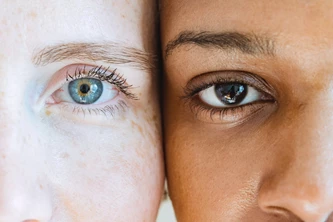 Continuing through the ASWB exam outline, a topic you may not have considered much since high school biology: Basic principles of human genetics. Let's get some fundamentals reloaded, just in case something from the topic appears on the ASWB exam.
Continuing through the ASWB exam outline, a topic you may not have considered much since high school biology: Basic principles of human genetics. Let's get some fundamentals reloaded, just in case something from the topic appears on the ASWB exam.
Genetics Basics
Human genetics is the study of the inheritance of traits and characteristics in humans. It encompasses the principles of heredity, the transmission of genetic information from one generation to the next. Here are some basic principles of human genetics:
Understanding these basic principles of human genetics is fundamental for various fields, including medicine, biology, and genetic counseling. It helps explain the inheritance of traits, the risk of genetic disorders, and the broader patterns of human variation--all topics social workers encounter all the time.
For a deeper dive on the topic, try this primer.
Genetics and Social Work
Genetics can have significant implications in the field of social work, influencing various aspects of practice. Social workers often encounter individuals and families dealing with genetic conditions, hereditary diseases, and complex family dynamics related to genetic factors. Here are some ways in which genetics intersects with social work:
-
Genetic Counseling and Support Social workers may collaborate with genetic counselors to provide support to individuals and families facing genetic issues. This includes helping clients understand the emotional, psychological, and social implications of genetic conditions.
-
Adoption and Genetic Identity Social workers working with adoptive families or individuals may address issues related to genetic identity and help clients explore feelings and questions about their genetic background.
-
Ethical Considerations Social workers need to be aware of ethical considerations related to genetic information, including issues of identity, privacy, confidentiality, and the potential for genetic discrimination. They may provide guidance on informed consent and help clients navigate ethical dilemmas.
-
Child and Family Welfare Genetic factors can impact child and family welfare, influencing issues related to child protection, adoption, and foster care. Social workers may assess the impact of genetic conditions on a child's well-being and support families in providing appropriate care.
-
Collaboration with Healthcare Professionals Social workers often collaborate with healthcare professionals, including genetic counselors, physicians, and nurses, to provide holistic care to individuals and families dealing with genetic concerns. This interdisciplinary approach ensures comprehensive support for clients.
On the Exam
Will this (genetic) material appear on the social work licensing exam? Probably not in this just-the-facts form. Questions might looks something like this:
- A social worker is working with a couple struggling with the news of a genetic disorder affecting their unborn child. What is the most appropriate role of the social worker in this situation?
-
A client is adopted and is curious about their genetic history. How can the social worker best support the client in exploring their genetic background?
-
A family is seeking assistance due to concerns about a genetic condition that runs in their lineage. What initial steps should the social worker take?
Get ready for questions like these with SWTP's full length practice tests.

 Continuing through the ASWB exam outline, a topic you may not have considered much since high school biology: Basic principles of human genetics. Let's get some fundamentals reloaded, just in case something from the topic appears on the ASWB exam.
Continuing through the ASWB exam outline, a topic you may not have considered much since high school biology: Basic principles of human genetics. Let's get some fundamentals reloaded, just in case something from the topic appears on the ASWB exam.